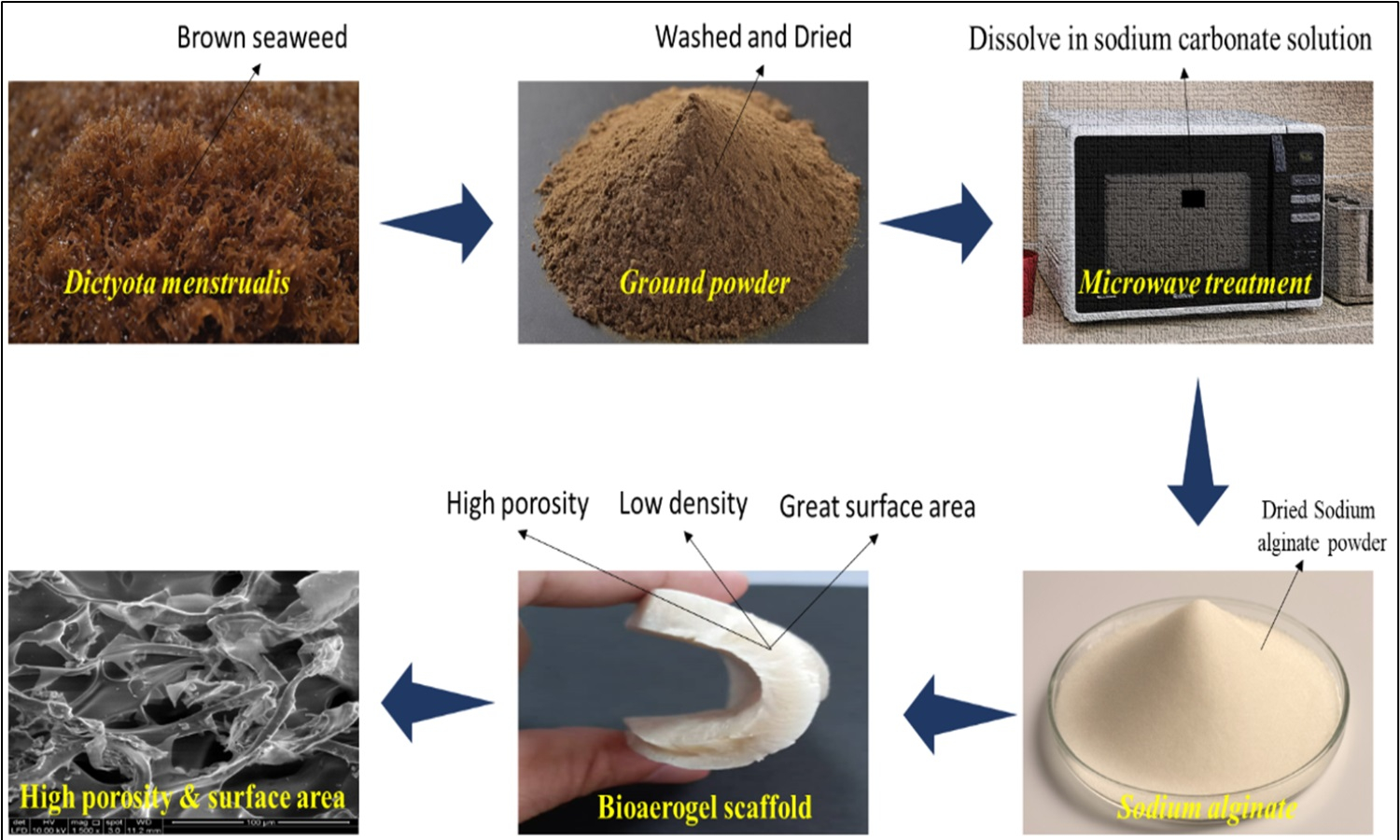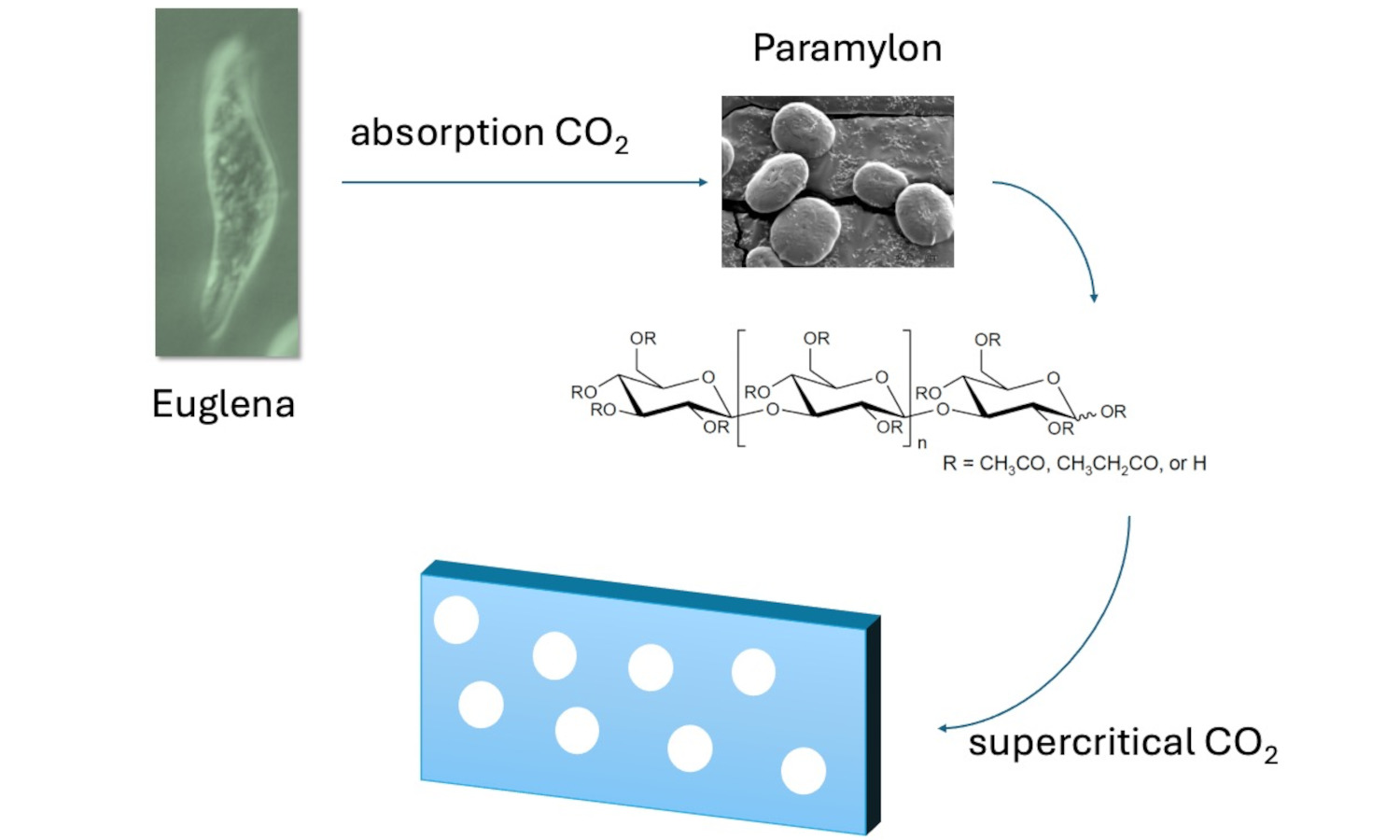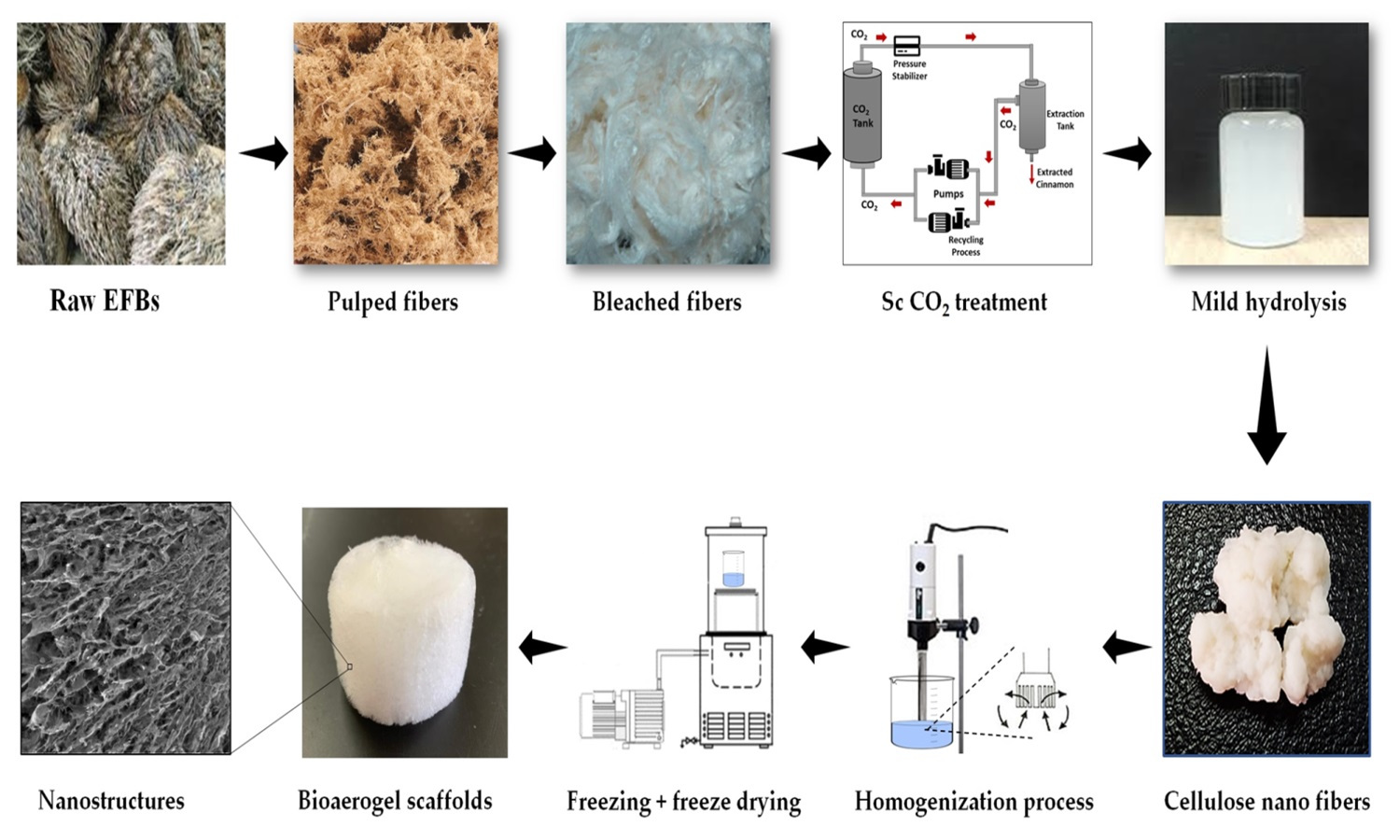Microwave-assisted sodium alginate extraction from Dictyota menstrualis and the fabrication of green thermal insulators
Abdul Khalil H. P. S. , Abdussalam Giuma, Esam Bashir Yahya
, Abdussalam Giuma, Esam Bashir Yahya , Indra Surya
, Indra Surya , Arif Nuryawan
, Arif Nuryawan , Tata Alfatah
, Tata Alfatah , Mardiana Idayu Ahmad
, Mardiana Idayu Ahmad
 , Abdussalam Giuma, Esam Bashir Yahya
, Abdussalam Giuma, Esam Bashir Yahya , Indra Surya
, Indra Surya , Arif Nuryawan
, Arif Nuryawan , Tata Alfatah
, Tata Alfatah , Mardiana Idayu Ahmad
, Mardiana Idayu Ahmad
Vol. 18., No.8., Pages 796-806, 2024
DOI: 10.3144/expresspolymlett.2024.59
DOI: 10.3144/expresspolymlett.2024.59
GRAPHICAL ABSTRACT

ABSTRACT
This study investigates the enhanced extraction of sodium alginate (SA) from Dictyota menstrualis using microwave-assisted techniques and its subsequent application in fabricating green thermal insulators. Utilizing optimized microwave parameters, we achieved a notable increase in SA yield, peaking at 18.5%, significantly higher than the 14.2% obtained through conventional methods. This process not only underscores the efficiency of microwave-assisted extraction by improving yield by approximately 30% but also highlights its environmental sustainability due to reduced solvent use and shorter processing times. The study demonstrates that increasing sodium alginate concentration from 1 to 5% enhances the mechanical strength and thermal insulation properties of bioaerogel scaffolds, evidenced by an increase in density from 0.171 to 0.234 g/cm3 and a decrease in porosity from 93.6 to 89.6%. Additionally, the thermal conductivity and diffusivity measurements of 0.065 W/(m·K) and 0.294 mm2/s, respectively, affirm the excellent thermal insulation stability of these scaffolds. The study demonstrates the potential of microwave-assisted extraction as a scalable and eco-friendly approach for biopolymer recovery, and the feasibility of using the extracted SA in creating effective, green thermal insulators, marking a significant step towards sustainable material development.
RELATED ARTICLES
Viktória Kunsági, Péter Széplaki, Márton Tomin
Vol. 19., No.7., Pages 706-725, 2025
DOI: 10.3144/expresspolymlett.2025.54
Vol. 19., No.7., Pages 706-725, 2025
DOI: 10.3144/expresspolymlett.2025.54

In this study, we investigated the influence of processing parameters on the cellular structure and density of specimens fabricated using in-situ foam 3D printing. First, we conducted a comprehensive analysis to examine how the combined effects of printing temperature and speed influence the four key stages of the foaming process: gas dissolution, cell nucleation, cell growth, and stabilization. By evaluating the structural characteristics of the printed foams, we identified the dominant mechanisms governing each stage. Next, we explored the effect of nozzle diameter, an aspect previously unexamined in the literature. We found that smaller nozzle diameters promote higher cell density due to enhanced pressure drop and shear-induced nucleation, resulting in a 36.78% reduction in density and a 60.31% increase in cell density when using a 0.4 mm nozzle instead of 0.8 mm (at 240°C, 60 mm/sec). Finally, we fabricated functionally graded four-layer structures by adjusting the printing temperature for each layer to control porosity distribution. To evaluate the mechanical performance of these graded structures, we performed three-point bending and drop-weight impact tests, allowing us to assess how layer order influences mechanical properties. Our results showed that proper layer sequencing can increase flexural strength by up to 69.35% and improve perforation energy by more than 94.82% compared to homogeneous structures.
Seisuke Ata, Takumi Ono, Motonari Shibakami
Vol. 19., No.6., Pages 628-635, 2025
DOI: 10.3144/expresspolymlett.2025.47
Vol. 19., No.6., Pages 628-635, 2025
DOI: 10.3144/expresspolymlett.2025.47

This study demonstrated, for the first time, the successful formation of porous paramylon esters, which were made from euglenoid polysaccharide known as paramylon and short-chain fatty acids, through supercritical CO2 processing. By maintaining a constant ester functional group attached to the paramylon and varying its proportion, distinct porous structures were selectively produced. Solubility parameter estimations indicated that changes in esterification had no significant effect on the solubility of the paramylon esters used in the experiment. Thus, these structural differences are likely attributed to variations in the viscoelastic properties of paramylon esters under supercritical CO2 conditions. Furthermore, thermal conductivity measurements revealed reductions of up to 20%. Intriguingly, substantial decreases in thermal conductivity were observed even at low foaming ratios, achieved through precise control of the porous structure.
Rahadian Zainul, Yonss Mbrook Albadn, Esam Bashir Yahya, Salim Manoharadas, Nur Izzaati Saharudin, Abdul Khalil H. P. S., Mohammad Rizwan Khan, Mohamed Jaber
Vol. 18., No.4., Pages 359-370, 2024
DOI: 10.3144/expresspolymlett.2024.27
Vol. 18., No.4., Pages 359-370, 2024
DOI: 10.3144/expresspolymlett.2024.27

In this study, we employed supercritical carbon dioxide (scCO2) treatment under varying conditions: low-pressure treatment at 30 MPa and high temperature at 80°C (LPHT group) and high-pressure treatment at 60 MPa and low temperature at 50°C (HPLT group) for nanocellulose isolation. The scCO2 treatment resulted in smaller particle sizes and enhanced crystallinity. Notably, HPLT exhibited superior efficiency compared to LPHT treatment. Utilizing temperatures and pressures above the critical point effectively penetrated natural fibers, reducing nanocellulose particle sizes. Moreover, high-pressure and low-temperature nanocellulose demonstrated the highest crystallinity and negative zeta potential values (78.2% and –32.4±4.01 mV), surpassing those of the low-pressure and high-temperature group (77.9% and 26.0±2.34 mV) and control (77.3% and 25.9±3.13 mV). The concentration of nanocellulose significantly impacted the porosity, pore size, and water absorption of the bioaerogel scaffolds, indicating the potential for sustainable and environmentally friendly approaches in material fabrication for diverse applications.



